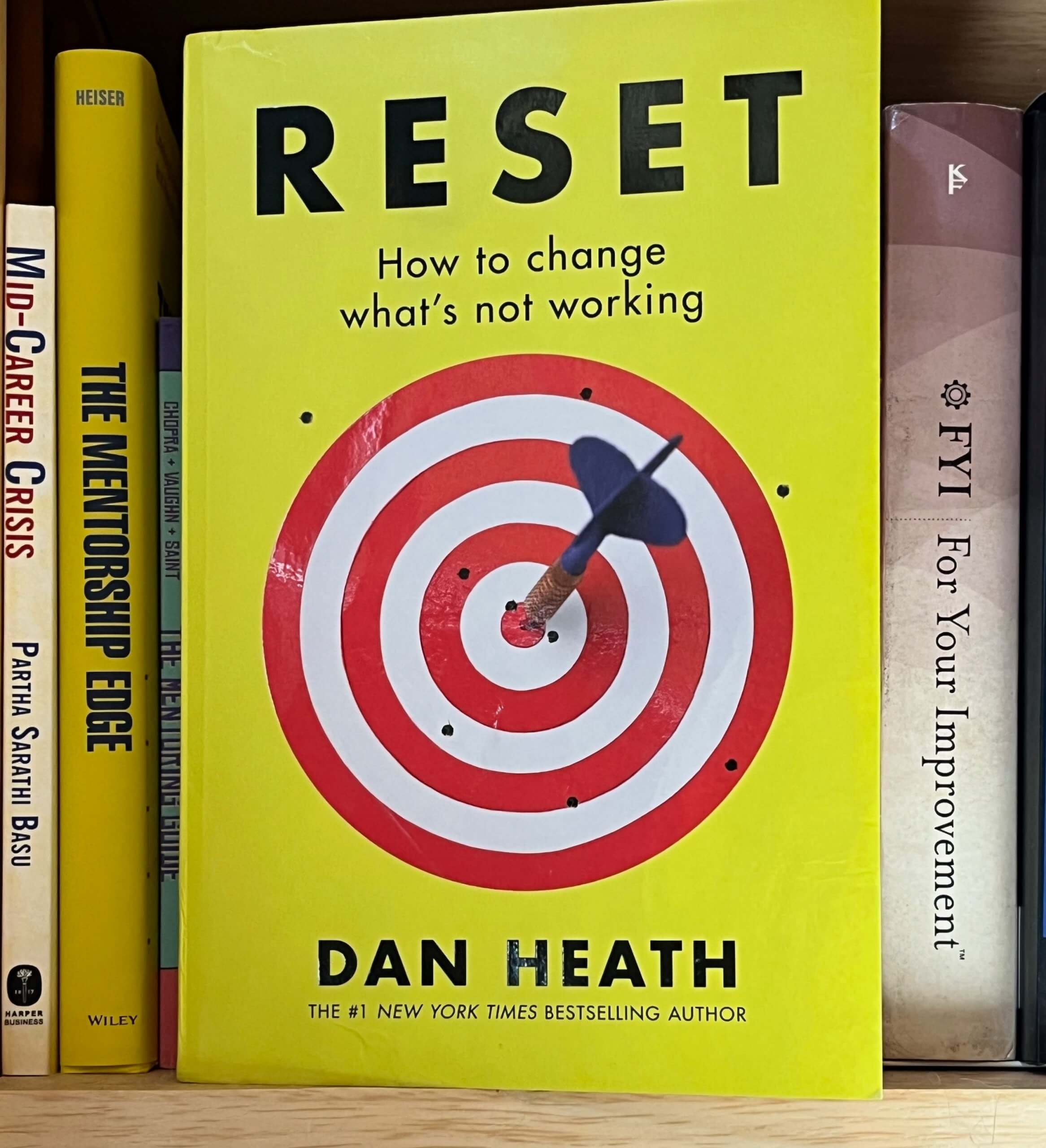Author Dan Heath, often alongside his brother Chip, writes engaging, bestselling business books. His latest effort describes how to “reset” business practices that continue mainly because of historical inertia instead of thoughtful design. Reset: How to Change What’s Not Working highlights how to make stagnant work situations into more vibrant affairs.

The suggested leadership practices have obvious implications all over workplaces, but I want to highlight one special angle: collaborating. We’ve all been inspired to work together with different types of people, so we form working relationships to achieve great things. Then, as life ineluctably happens, we lose our initial passion and fall prey to inertia. Our collaborations lose their potency and never achieve the creative output that sparked our dreams.
Heath provides some solutions to reset a working relationship. He first suggests identifying “leverage points” to re-found a relationship. Two of the first five chapters stand out as particularly relevant: Consider the Goal of the Goal and Study the Bright Spots.
The “Goal of the Goal” essentially means digging deeper into why you are collaborating. He advocates not just going through the motions of a practice – like publishing a paper or writing for a grant – but instead to figure out what greater good you want to accomplish – like transforming the lives of patients with a particular disease. Stagnation often occurs when we focus on performance of a task while forgetting the big picture.
Surveying the “Bright Spots” means identifying what is going right in one’s collaboration. Instead of focusing on improving every aspect, focus on accentuating the quirky regions where your collaboration excels. Where does your partnership stand out against the competition? Instead of playing catch-up with everyone else, he suggests doubling down on your strengths.
After identifying these leverage points, the final six chapters focus on how to reorganize work to accomplish more. Not all chapters relate perfectly to collaborating, but some intersections yield amazing insights.
My favorite suggestion of this section is to “let people drive” in the new setup. As a initiator of a collaboration, it’s easy to want to call all the shots. At first, our technical and mentoring expertise is essential, but after people align with the challenge, it’s time to let their ideas push the envelope. After all, that’s why we collaborate!
To illustrate, he provides an example of a healthcare services company that allowed kidney patients to oversee their weekly dialysis sessions. At first, this idea sounds like a disaster, but the patients learned to use their time more efficiently than before, like by riding a stationary bike while receiving dialysis. The nurses transformed from caregivers to coaches. By giving patients autonomy to drive their own care, the dialysis center became less like an assembly line and more collegial and collaborative.
Similarly, our collaborative relationships can benefit from pursuing others’ ideas – even ones that at first seem far-fetched. Trying out others’ ideas, even if some attempts fail, can uncover the good ones. Giving autonomy can breathe new life into a collaboration and transform it from a one-way relationship into a dynamic, creative font of new material.
Dan and Chip Heath’s books always motivate me to try out new approaches, and this book is no exception. Although its approach is one of managerial leadership, most principles can apply to collaborating with colleagues, direct reports, and bosses. They just might teach you to reset a stagnant collaboration into a source of life and productivity.
Reset: How to Change What’s Not Working
By Dan Heath
Copyright © 2025
Torva/Penguin
ISBN13 9781911709725
Page Count: 260
